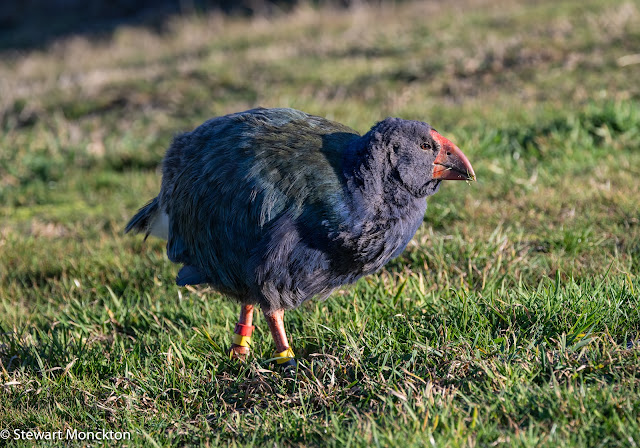The Takahe (
Porphyrio hochstetteri) is a flightless swamphen indigenous to New Zealand and the largest living member of the rail family.
The Takahe is an impressively large bird: its average length is about 63 cm and its average weight is about 2.7 kg in males, with females being slightly smaller. Its standing height is around 50 cm. (When I first saw them the thought occurred to me that they looked like purple swamp hens that had been inflated with a pump!)
Like many of its close relatives these birds mainly eat plant matter, although they will eat insects and have even been seen to eat small ducklings.
Takahe plumage, beaks, and legs show typical swamp hen colours. In adult takahe the plumage is silky, and remarkably iridescent, with dark-blue or navy-blue on the head, neck, and underside and peacock blue on the wings.
For many years the Takahe was thought to be extinct, but in 1948 a small population was found in a remote part of South Island in the Murchison Mountains. Since that time there has been considerable effort put into saving the species. It has not always been a simple task, with the known population of the bird fluctuating considerably. It is now thought that there are about 500 of these birds, some in the wild and others in protected sanctuaries.
These birds were photographed at the Orokonui Ecosanctuary, near Dunedin. They are free roaming birds, within the sanctuary - but they have been released there as part of the conservation effort. (Hence 'wild-ish')
As ever, to joining with WBW, click on the link below. SM


























































